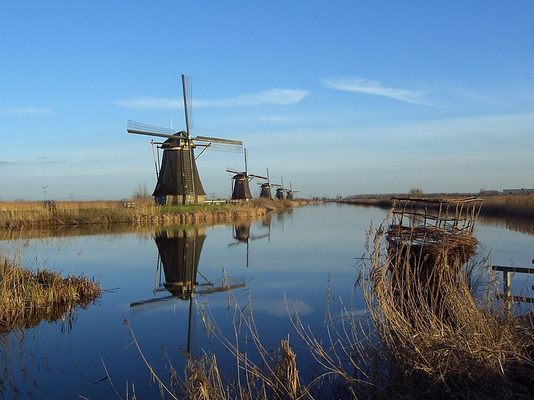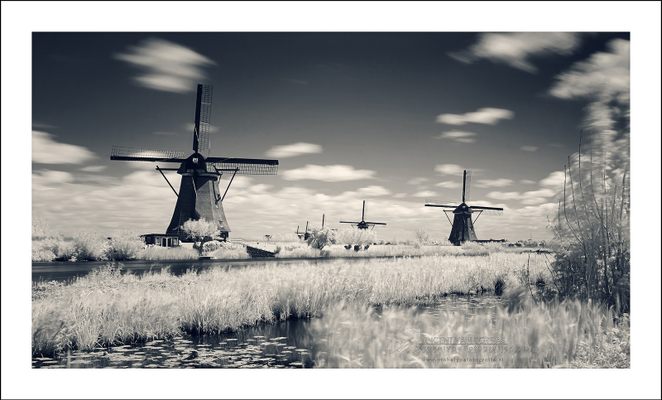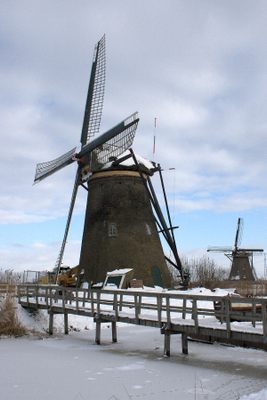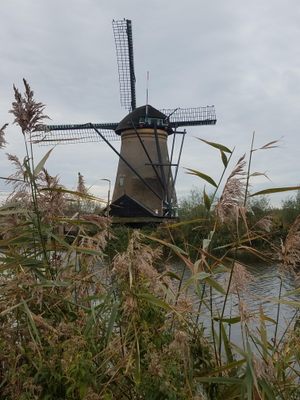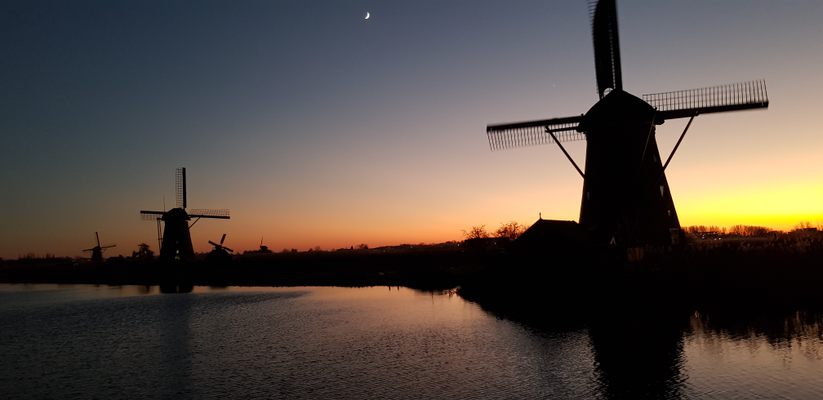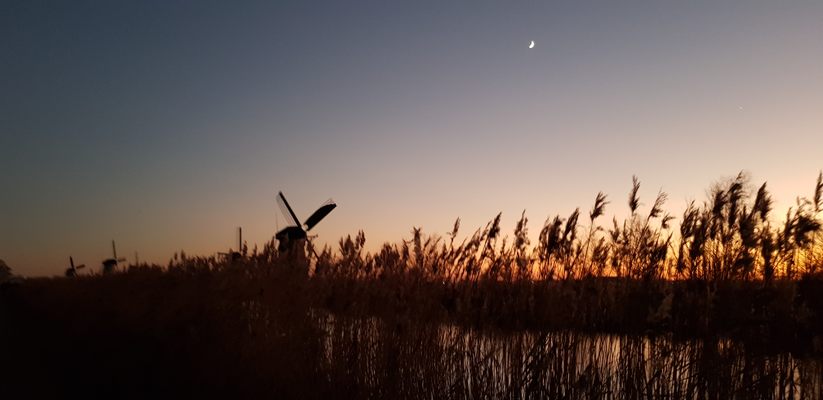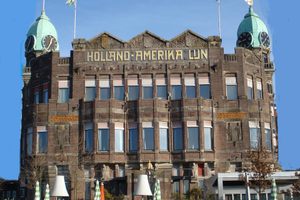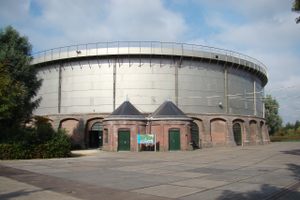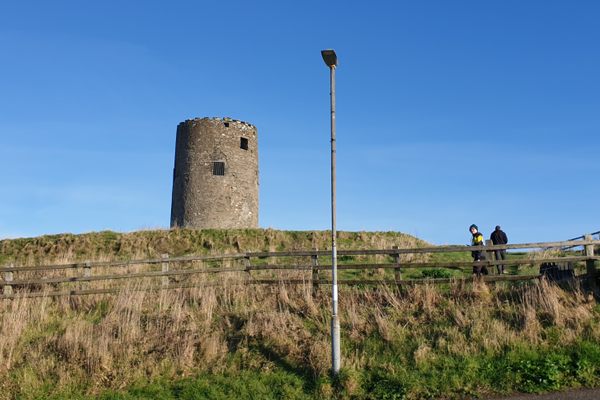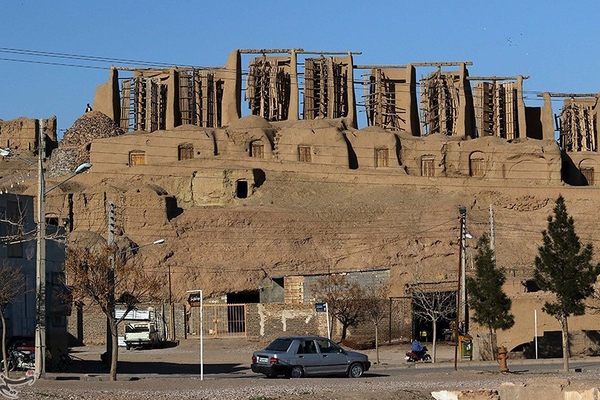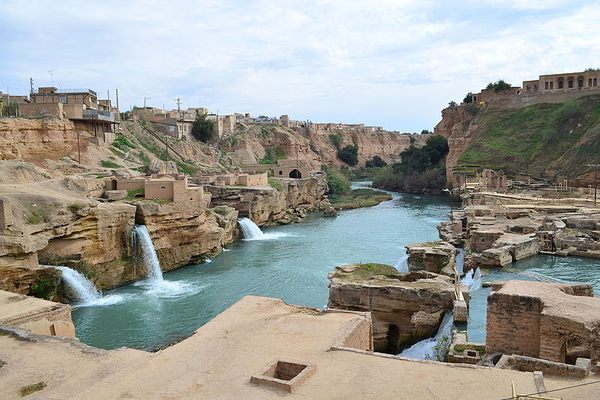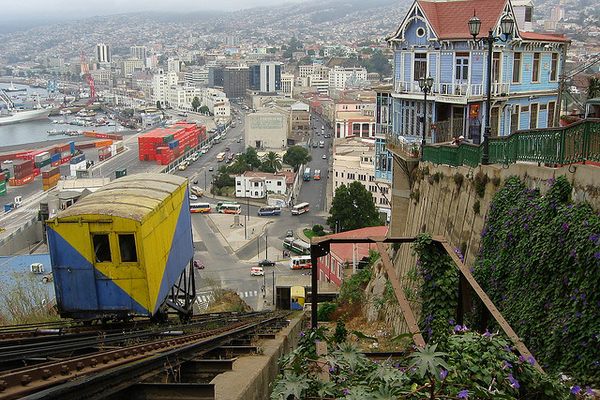About
Think "Holland" and you've probably already conjured the iconic images of tulips and windmills. More precisely, the very specific windmills you're envisioning right now are that of Kinderdijk.
Though it may sound odd for how technical and pragmatic the region proved to be, the name Kinderdijk translates in Dutch to mean "children's dike." According to local legend, after a particularly terrible flood in the 15th century, a lone basket was left floating in an inundated canal. Upon closer inspection, a cat was found bounding from one side of the basket to the other in an effort to keep it balanced, for inside rested an orphaned baby. The cat had kept the babe afloat, safe and sound during its journey… Thus giving the world the folktale "The Cat and the Cradle" in addition to the village of Kinderdijk its name.
Back in the modern day, visitors will find 19 historically authentic windmills scattered across Kinderdijk's canal-riddled landscape. With their sails raised to the skies (coming to rest in formations that communicate across the bogs in a language of semafors), one could be forgiven for believing these are creatures beholden to the air. What history reveals, in fact, is that the Netherlands' famous windmills are well-disguised creatures of the sea, without which the nation's famously innovative water management system would not have been possible.
Sometime in the 13th century, Zuid-Holland's peat rivers ceased to drain as they had been, creating a pattern of flooding that devastated the beautiful landscape at Alblasserwaard, which already existed below sea level. Berms were built to prevent flooding, but pumping stations needed to be constructed to continue water flow from low to high areas; hence, the 19th windmills still seen today.
Nowhere else in the world offers a complete portrait of early water management like that of Kinderdijk, which accounts for UNESCO's inclusion of the site among its World Heritage as of 1997 for its "unique character." Thanks to its truly groundbreaking unification of sea and sky, plus the added bonus of a world-renowned folktale, a visit to Kinderdijk is the sort of treasure that offers something for dreamers and pragmatists alike.
Related Tags
Community Contributors
Added By
Published
October 29, 2015
